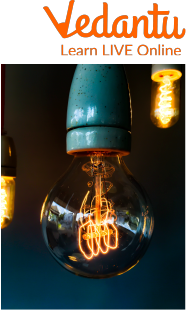




How Argon Is Used in Real Life and Industry
Kids, if I ask you to name the most abundant gases in earth's atmosphere, you will say oxygen, carbon dioxide and nitrogen. Behind nitrogen and oxygen, the third most abundant gas is the noble gas argon. The rightmost column of the periodic table is occupied by the six noble gases: helium, neon, argon, krypton, xenon, and radon. They do not interact with other elements; hence they cannot form more complicated compounds by bonding with other atoms. In this article, we will learn about argon and its uses.
What is Argon?
Argon is an inert gaseous chemical element of atomic number 18. It is one of the noble gases which makes up nearly one per cent of the earth's atmosphere. Further, we will discuss some properties of argon, uses of argon and much more.
Properties of Argon
It is a colourless, odourless gas that does react with anything.
Argon can combine with other substances under certain conditions.
Its solubility in water is equal to that of oxygen, which is one of its defining characteristics.
The thermal conductivity of argon is low.
Uses of Argon

Argon is Used in Bulbs
Argon is used for making many different things. Being an inert gas, it has its own advantages. Let’s look at some of them:
Neon Lights
Argon is useful for producing neon lights. This is accomplished by using argon, neon, and krypton. The outermost circling electrons in argon gas are temporarily excited by electricity and briefly jump to a higher "shell" or energy level. The electron then releases a photon, a massless packet of light, when it returns to its average energy level.
Heat Treating
An oxygen and nitrogen-free environment can be created for heat-treating procedures using argon, an inert gas.
3-D Printing
In the rapidly developing field of three-dimensional printing, argon is used. The gas will stop the oxidation of the metal, and other reactions during the fast heating and cooling of the printing medium and can lessen the effects of stress. To make specialised blends, argon can also be combined with other gases.
Metal Production
Argon can be employed in other processes to synthesise metals because it avoids oxidation (rusting) and replaces undesirable gases like carbon monoxide, which is similar to its use in welding.

Argon is used in Welding
Shield Gas in Welding
In addition to welding automobile frames, mufflers, and other automotive components, argon is also used to join specialised alloys. Argon is used in welding because it takes up space and stops other, undesirable reactions from happening nearby because of reactive gases like nitrogen and oxygen, which is why it is termed a shielding gas. It does not react with whatever gases and metals are floating close to the metals being welded.
Radioisotope Dating
Argon can date materials up to an incredible 4 billion years old.
Summary
We have discussed what is argon and application of argon. Argon is an inert gaseous chemical element of atomic number 18. It is one of the noble gases which makes up nearly one per cent of the earth's atmosphere. We also learned several important facts about argon: it is colourless, odourless and does not react with anything under certain conditions.
In 3-D printing, argon is used to stop oxidation during the fast heating and cooling of the printing medium. Argon can also be blended with other gases to create highly specialised blends.
FAQs on Understand the Major Uses of Argon
1. Is argon used in light bulbs?
In fluorescent and incandescent light bulbs, argon gas prevents oxygen from corroding the warm tungsten filament. Light bulb life is increased by the presence of argon, which stops the tungsten filament from melting. Isn’t it the most important application of argon?
2. Is argon flammable?
Argon is a gas with no colour or smell. Although oxygen and argon are both incombustible, oxygen can intensify the burning of a fire. May result in asphyxiation due to air displacement. The container could explode violently and launch into the air if it is exposed to fire or extreme heat for a long time.
3. Is argon toxic to breathe?
This gas is considered a basic asphyxiant because it is inert. Excessive quantities of inhalation can cause fainting, nausea, vomiting, loss of consciousness, and even death.









